

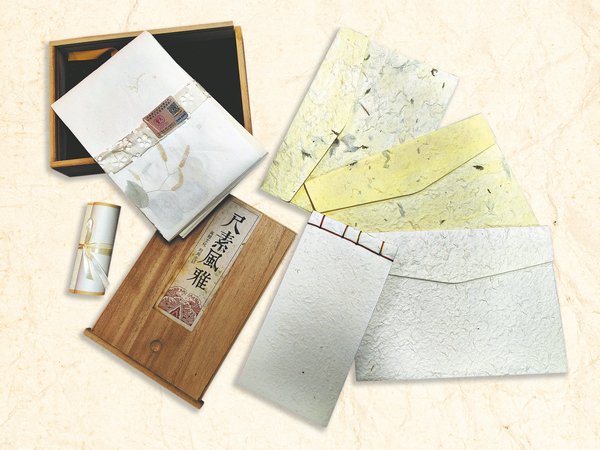
Items made of Xuan paper are popular tourist souvenirs in Jingxian county, Anhui province. BAI YING/FOR CHINA DAILY
In the realm of Chinese culture, the "Four Treasures of the Study", which are ink, paper, ink stone and brush, are not merely tools used by literati but also carriers of Chinese heritage.
For centuries, these treasures have been intricately intertwined with history, culture and the literati, influencing and enriching each other in profound ways.
Chinese ink, a fundamental element in calligraphy and painting, comes in two main varieties: pine soot and oil soot.
Pine soot ink, made from soot derived from pine trees, is characterized by its deep black hue, subtle sheen, lightweight texture, and suitability for calligraphy.
Oil soot ink, which is often produced from animal or plant oils, boasts a glossy, rich black color that's ide for painting. Raw materials for ink production include tung oil, vegetable oil, soybean oil, lard and pine wood.
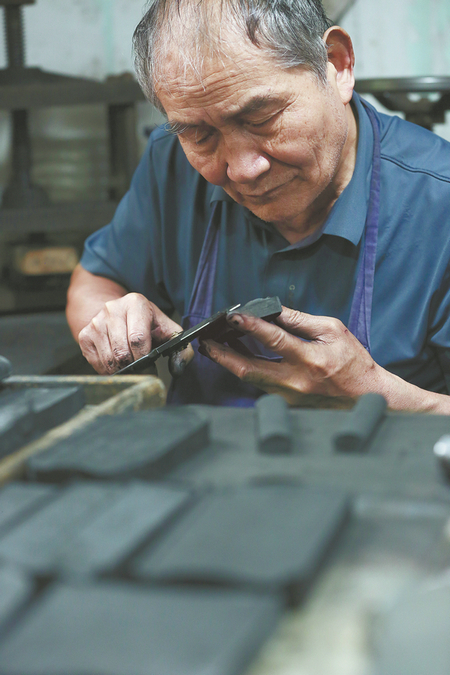
An artisan works on the drying process of Hui ink in Huangshan, Anhui province.XU JIE/GUO HAIPENG/HU DUNHUANG/FOR CHINA DAILY
The process of making ink varies among artisans, and ingredients are often kept secret. Common components include egg whites, fish glue, spices, pearls and medicinal herbs like cloves, purple grass, Chinese sumac, sandalwood and benzoin. There are over 1,000 ingredients in total.
Before the late Tang Dynasty (618-907), major ink production hubs were primarily situated in northern regions abundant in pine resources. The relocation of the ink-making focal point to Huizhou in the south stemmed from wars in the north and the plentiful pine reserves found in the Huizhou region in the southern part of today's Anhui province.
During the Song Dynasty (960-1279), the ink-making industry thrived, pioneering the creation of oil soot ink through the use of tung oil.
Huizhou rose as a center for master craftsmen, producing both pine soot ink and oil soot ink. Since the 12th century, Huizhou's renowned Hui ink has represented the pinnacle of ink quality in China.
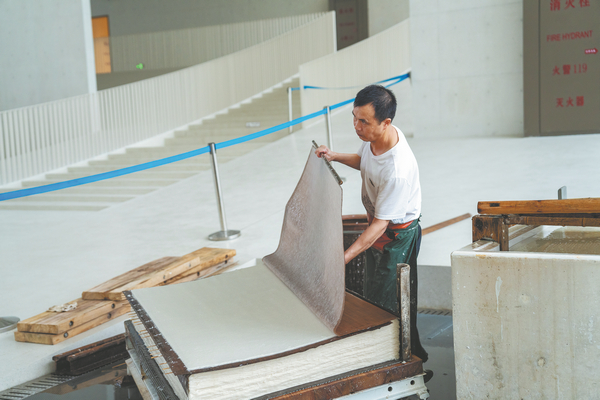
The making of Xuan paper is done manually.XU JIE/GUO HAIPENG/HU DUNHUANG/FOR CHINA DAILY
Xuan paper, or rice paper, is revered as "the king of paper", possessing a sheen akin to jade, a smoothness reminiscent of spring ice, and a density like a cocoon.
Originating in the Tang Dynasty and produced in Jingxian, which was under the jurisdiction of Xuanzhou during the Tang, the paper was named "Xuan paper" after its birthplace.
With a history of more than 1,500 years, Xuan paper is an exceptional example of China's traditional handmade paper and one of the Four Treasures of the Study.
Even today in Jingxian county, Anhui province, artisans still adhere to the 108 manual processes that have been passed down since the prosperous periods of the Ming (1368-1644) and Qing (1644-1911) dynasties for the production of Xuan paper.
As a staple in Chinese calligraphy and painting, Xuan paper is celebrated for its supple and resilient texture, exquisite grain, and distinct layers that enhance artistic expression, strong strokes and effortless long-term preservation.
Without Xuan paper, it would have been difficult for a vast amount of Chinese documents, classical texts, Buddhist and Taoist scripures, and precious artworks to survive through the centuries.
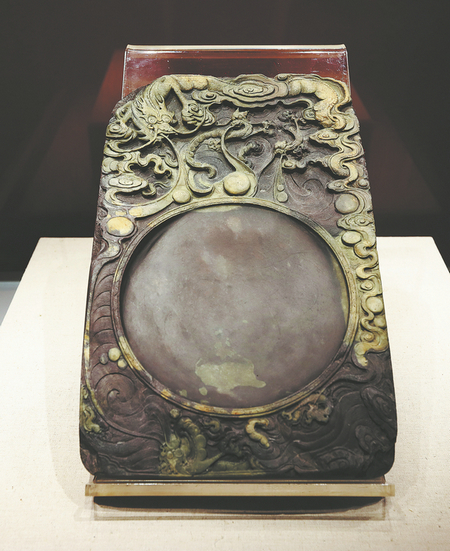
A Qing Dynasty (1644-1911) ink stone on display at a Beijing museum. XU JIE/GUO HAIPENG/HU DUNHUANG/FOR CHINA DAILY
Among the Four Treasures of the Study, paper easily turns to ash, brushes wear out quickly, and ink is prone to degrade. Only the ink stone remains durable and can be passed down through the ages. Hence, there is a saying: "For a scholar, having an ink stone is like a beauty having a mirror; it is the closest companion throughout one's life."
Originating in the Han Dynasty (206 BC-AD 220), the ink stone is meticulously crafted from materials like slate or soapstone, serving as the surface for grinding ink sticks with water to create ink for writing and painting.
Among the distinguished ink stones in China, She ink stones stand out as exemplars of excellence. Hailing from Shezhou in today's southern part of Anhui province, these stones derive their name from their birthplace and boast a history of over 1,200 years.
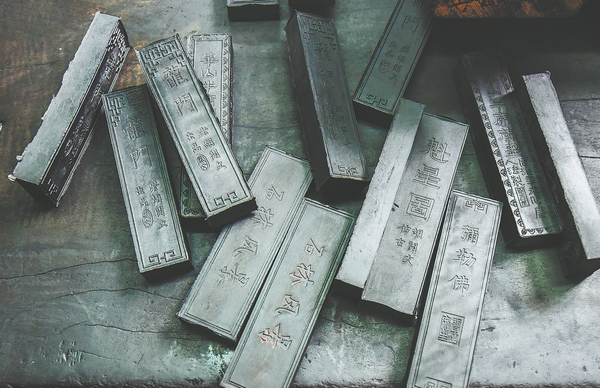
Hui ink represents the peak of ink quality in China. XU JIE/GUO HAIPENG/HU DUNHUANG/FOR CHINA DAILY
The creation of a She ink stone involves material selection, design, carving, polishing, maintenance and packaging.
Coupled with ingenious designs and masterful carving, She ink stones embody a fusion of various arts, including poetry, calligraphy, painting, seal engraving, epigraphy, sculpture and literature. This makes them highly valued not only for their practical utility but also for their aesthetic and collectible significance, earning the admiration of scholars.
In 2006, the traditional production of She ink stones, Hui ink and Xuan paper were included in the national intangible cultural heritage list.

